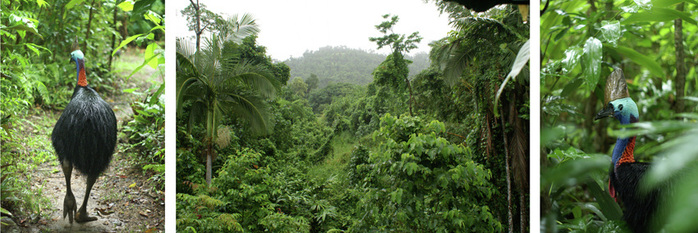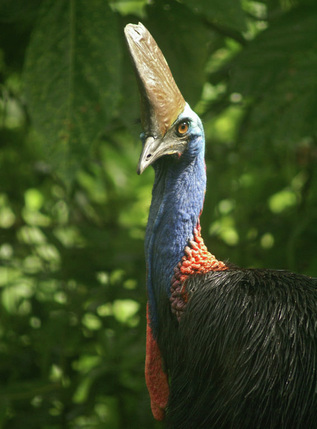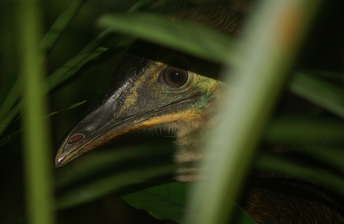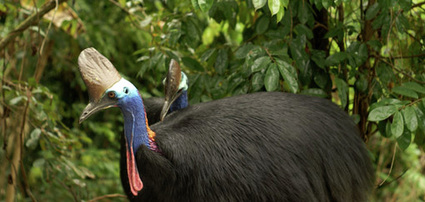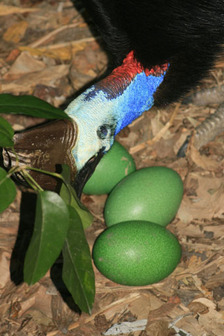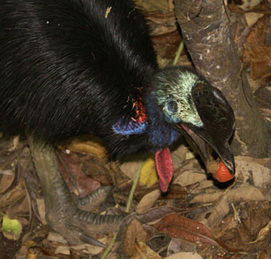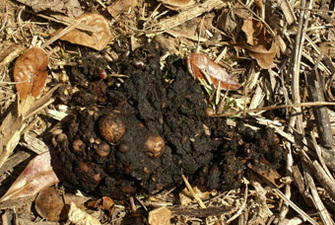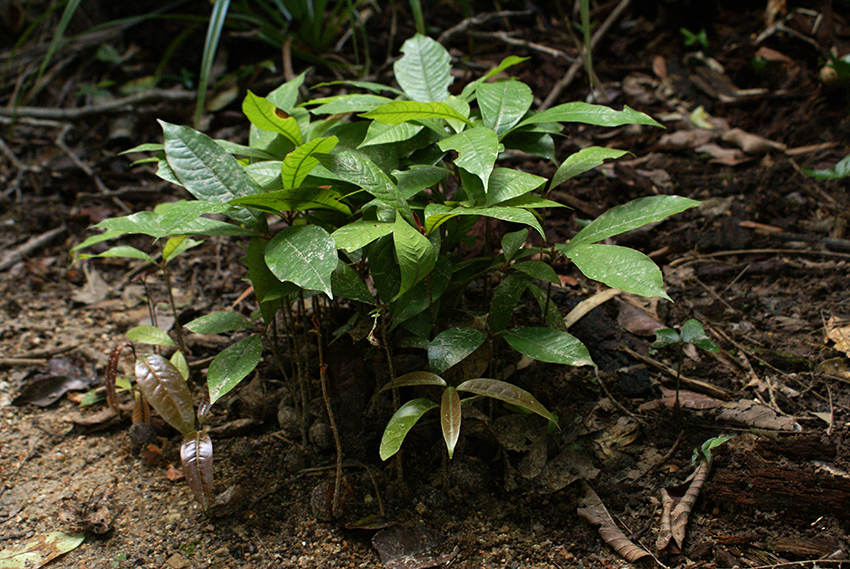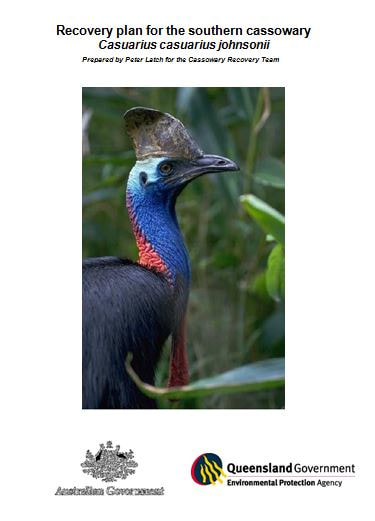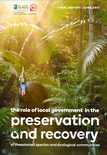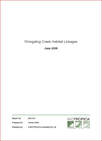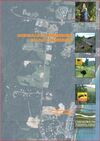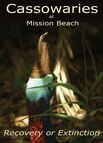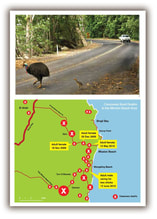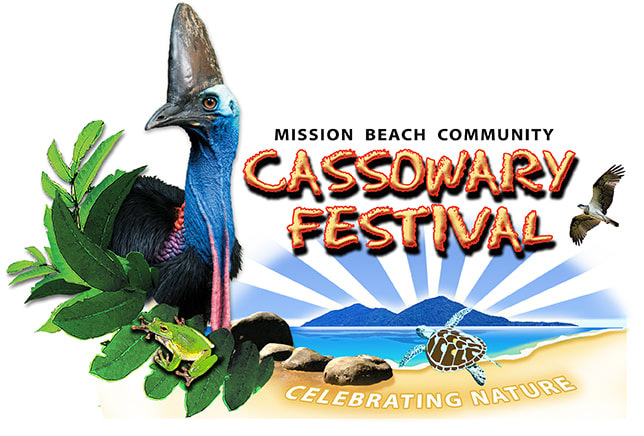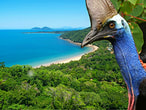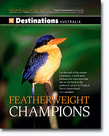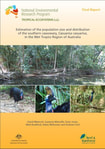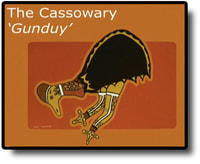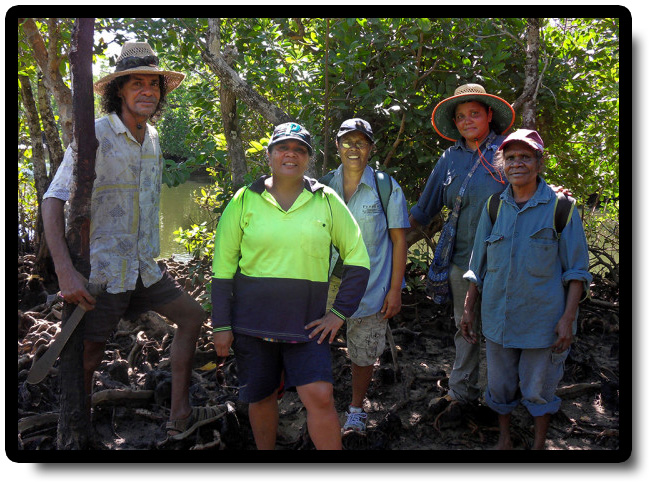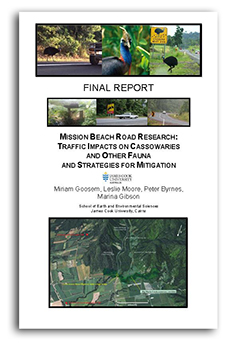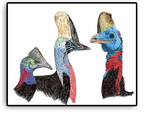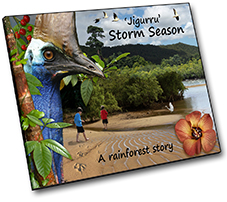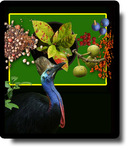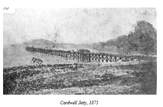We acknowledge The Djiru Aboriginal Peoples as the Traditional Custodians of Mission Beach and recognise their connection to this cultural landscape. We pay our respect to Elders past, present and future.Listen to Leonard Andy, Djiru Traditional Owner talking about Gunduy (Cassowary)
Cassowaries at Mission BeachMission Beach - The Cassowary Capital THE SLOW DOWN TOWN! Please remember Take extra care on roads through cassowary habitat Drive expecting to see a cassowary over the next crest or around the next corner Flash a warning to oncoming drivers if you see a cassowary near or on the road Pull over and flash hazard lights to let a cassowary cross the road Please be patient and don't overtake vehicles stopped to allow cassowaries to cross the road THANK YOU AND WELCOME TO OUR SLOW DOWN TOWN
For official reporting of cassowary incidences including the request for temporary recent crossing signs please ring 1300 130 372 and follow the prompt for injured cassowaries.
The Southern Cassowary (Casuarius casuarius johnsonni)
The Australian cassowary is called the Southern Cassowary or sometimes the Double-wattled Cassowary. Once you realise that this species is also found in Papua New Guinea along with two more species and several subspecies, then it becomes clear why ours is called the Southern Cassowary.
Dogs can easily chase it down and kill it; an adult Cassowary already resident in that forest can attack it and perhaps the young Cassowary may not be able to find sufficient food in a foreign area where it is disoriented.
Once the Cassowary has established its home range, it moves regularly through that range which can be quite large. Some of the Daintree animals have a home range of roughly 7 square km. The shape and area of the range changes depending on food and the annual breeding season (courting starts in May/June). Home ranges are not necessarily clearly defined and defended territories - they can overlap. Females tend to have overlapping ranges with several males.
On the Tablelands where the habitat is mainly rainforest, the ranges are larger. This increased range leads to fewer interactions between birds.
Why Cassowaries Are So Important
So the cassowary is vital for the widespread continuance of over 150 species of plants. That is why the Cassowary is referred to as a "keystone species"
Threats to CassowariesThe latest estimates suggest the total Australian population of the southern Cassowary numbers only between 1,200 and 1,500 adults. Some of the many problems facing cassowaries are:
One of the most ironic threats to cassowaries is the perceived kindness of people who enjoy hand feeding these impressive animals. Once a Cassowary is 'tamed' and approaches people rather than avoids them, its chances of being killed increase dramatically. This is because the cassowary frequently approaches cars or wanders regularly through residential suburbs where it can be attacked by dogs, especially those breeds kept for their hunting skills.
There are three specific areas in the Wet Tropics that are 'hot spots' for cassowaries: - the Daintree area which has the problem of roads cutting through the bird's home ranges, - the Kuranda and Atherton Tableland area which has the problems of habitat loss, fragmentation by roads and marauding dogs, - and the Mission Beach area which has suffered extensive habitat loss to the degree that the birds have been squeezed into unnaturally small home ranges. They are forced to seek food from plantation sources and this closeness to human settlements brings them into more frequent contact with dogs. As they try to move around the remaining patches of habitat between the beach and the sloping hinterland behind it, they are commonly run over by cars. As an endangered and nationally listed species, there is help being directed towards protection and hopefully recovery of Cassowary numbers but there is still much that needs to be done. The concern and action of everyone who resides in the Wet Tropics area is needed to save this bird but there are still too many people who aren't sufficiently interested. Simple steps can go a long way such as slowing down in Cassowary 'hot spot' areas and keeping dogs restricted to a fenced yard or on a leash. If the whole community takes up the challenge, we could save the Cassowary. Thanks to the Wet Tropics Management Authority for the above information. For more information about cassowaries see the Australian Government page about the endangered Southern Cassowary. Cassowary Fruiting Trees
|
|
